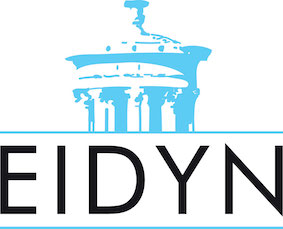Guest Speakers
José M. Araya
Abstract for ‘Taking it slow: self-control as low precision-weighting at low-levels of the cortical hierarchy’:
I will argue that a predictive processing (PP) account of self-control will be an attentional view in line with construal theories (e.g., Fujita, 2008), in ways that refute the assumptions of divided-mind accounts of self-control—the dominant view in the naturalistic philosophy of self-control, according to which the human mind is architecturally divided in two systems: ‘reason’ and ‘passion’ (Sripada, 2014).
I will suggest that if PP is on track, the divided-mind account is problematic: As the PP framework shows, our mental architecture is not bipartite, I does not exhibit segregated systems, as the divided-mind account assumes; rather, the mind exhibits a continuous, unified architecture. On the other hand, the divided-mind account is problematic on its own, independently of PP’s plausibility. Firstly, emotions can play the role of controlling behaviour in line with better judgment. Secondly, the divided-mind account assumes a dissociation between cognition and emotion that current trends in cognitive neuroscience fail to support (e.g., Pezzoa, 2013). Thirdly, the dual-system architecture is problematic. We lack then a philosophical account of self-control compatible with the promising principles of PP.
I will suggest a PP view on the nature of self-control, in line with construal theories (e.g., Fujita, 2008). I will suggest that self-control amounts to precision estimation (i.e., attention) during the perception of the affordance landscape. The idea is that successful self-control consists in allocating more gain (precision) to features encoded at high-levels of the cortical hierarchy, while reducing the gain of features encoded at low-levels of the cortical hierarchy. As precision-weighting can be roughly identified with attention, successful self-control amounts then to (partially) ignoring evidence favouring the presence of local (lower-levels), contextualized features in the affordance landscape. Behavioural evidence strongly supports the claim that attending to information encoded at slow time-scales (higher-levels), while ignoring lower-levels, promotes self-control (e.g. Yi et al., 2017). Self-control amounts then to ‘misrepresentation’ of fast-timescale affordances. This view naturally accommodates key insights of the divided-mind account and other competing approaches.
Shannon Proksch
Abstract for ‘Synchrony & the Markov blankets of multi-agent human interaction’:
An important coordinating pattern of multi-agent human interaction is synchrony. In fact, humans have such a tendency to synchronize that they will unintentionally synchronize with each other even in the presence of obstacles. Synchronous behavior in humans is also associated with various aspects of prosocial cognition, including increased affiliation, belonging, and cooperation. Synchrony is thus an important organizing pattern of interaction for not only the unconscious self- organization of human behavior, but also the maintenance of human pro-social dynamics.
We can discuss synchrony between two or more interacting systems—in this case, (groups of) human individuals—in terms of the statistical boundaries of their Markov blanket(s). At short timescales and small spatial scales, the Markov blanket of an interacting dyad can emerge as their walking patterns synchronize or as individuals converge on oscillatory strategies in a digital herding game, such that a conditional dependence exists between the behavior of each interacting agent on the other. At longer timescales and potentially larger spatial scales, a global Markov blanket can emerge around individuals within a joint musical ensemble as each member’s individual behavior has a conditional dependence on the acoustic musical output of the group as a whole.
Multi-agent human interaction in crowds provides an interesting case, as crowd behavior depends alternatively on interactions at small scales of spatiotemporal activity, or on larger scales of spatiotemporal activity, or some mixture of both. A crowd can be defined as a collection of individuals who are either incidentally in the same location at the same time, or who are expressively behaving together in the same location at the same time. I discuss how various spatiotemporal scales of synchrony in the multi-agent interactions of a crowd can be conceptualized in terms of expanding or contracting Markov blankets. For example, spontaneous synchronization in applause occurs when a group of individuals transitions from clapping in random phase—each individual is their own Markov blanket—to coordinating with each other in a periodic rhythm—the entire crowd is defined by one global Markov blanket. I expand on this example by describing the behavior of crowds of sports fans or concertgoers as multi-agent groups with dynamically changing Markov boundaries, mediated by synchronous behavior, shared social context, and what Ramstead et al., have referred to as regimes of shared attention.








Comments are closed
Comments to this thread have been closed by the post author or by an administrator.